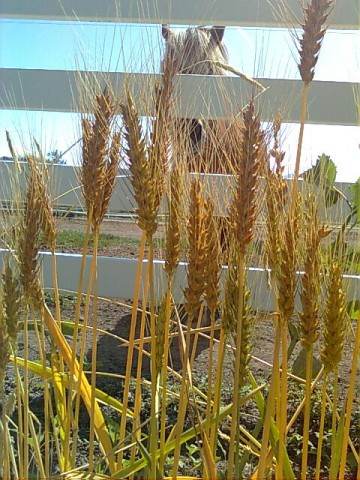
 5
5







 3
3




Paul Sofranko wrote:Wheat came in surprisingly next to last. Maybe if we do another poll, it'll finish higher.
 I think people who love to garden, and love to eat things they grow, also love to challenge themselves a little bit. Grains fit that bill, even though they are one of the simplest crops. Another thing that attracts some gardeners - history. Grains and pseudograins have some of the longest, most fascinating histories.
I think people who love to garden, and love to eat things they grow, also love to challenge themselves a little bit. Grains fit that bill, even though they are one of the simplest crops. Another thing that attracts some gardeners - history. Grains and pseudograins have some of the longest, most fascinating histories.
Gene Logsdon, Chelsea Green Publishing, May 28, 2009 - an excerpt from Small-Scale Grain Raising: An Organic Guide to Growing, Processing, and Using Nutritious Whole Grains for Home Gardeners and Local Farmers, Second Edition by Gene Logsdon. wrote:
I remember the first year we grew grains in our garden. A good gardening buddy dropped by one day early in July just when our wheat was ripe and ready to harvest. He didn't know that though. His reason for stopping was to show me two splendid, juicy tomatoes picked ripe from his garden. After a few ritual brags -- and knowing full well that my tomatoes were still green -- he asked me in a condescending sort of way what was new in my garden. I remembered the patch of ripe wheat.
"Oh, nothing much," I answered nonchalantly, "except the pancake patch."
"The pancake patch?" he asked incredulously.
"Yeah. Sure. Until you've tasted pancakes fresh from the garden, you haven't lived."
"And where might I find these pancakes growing?" he queried sarcastically, to humor my madness.
"Right up there behind the chicken coop in that little patch of wheat. All you have to do is thresh out a cupful or two, grind the grain in the blender, mix up some batter and into the skillet. Not even Aunt Jemima in all her glory can make pancakes like those."
My friend didn't believe me until I showed him, step by step. We cut off a couple of armloads of wheat stalks, flailed the grain from the heads onto a piece of clean cloth (with a plastic toy ball bat), winnowed the chaff from the grain, ground the grain to flour in the blender, made batter, and fried pancakes. Topped them with real maple syrup. Sweet ecstasy. My friend forgot all about his tomatoes. The next year, he invited me over for grain sorghum cookies, proudly informing me that grain sorghum flour made pastries equal to, if not better than, whole wheat flour. Moreover, grain sorghum was easier to thresh. I had not only made another convert to growing grains in the garden, but one who had quickly taught me something.


![Filename: June-bug-on-golden-amaranth.jpeg
Description: Lots of creatures liked the amaranth. But they did not serve as a cucumber beetle trap crop as hoped. [Thumbnail for June-bug-on-golden-amaranth.jpeg]](/t/197728/a/193996/June-bug-on-golden-amaranth.jpeg)

Be joyful, though you have considered all the facts. ~Wendell Berry
 3
3














 1
1




Anthony Powell wrote:Is anybody growing mixed grains? https://www.wired.com/story/ancient-grain-crops-future-of-farming/
Be joyful, though you have considered all the facts. ~Wendell Berry
 4
4




 3
3




 2
2




JayGee

|
If you two don't stop this rough-housing somebody is going to end up crying. Sit down and read this tiny ad:
12 DVDs bundle
https://permies.com/wiki/269050/DVDs-bundle
|




